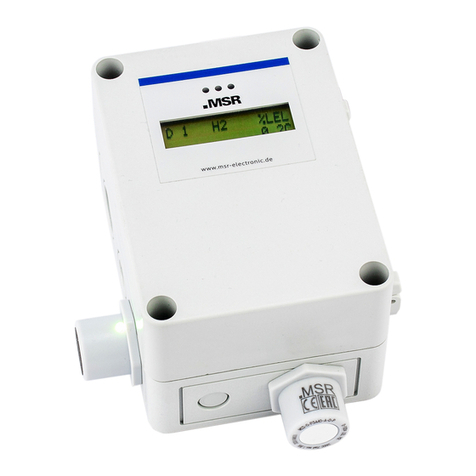PolyXetais a registered trademark of MSR Made in Germany GAPX2_Freon_E_2020_05_18
Phone: +49 8531 9004-0 Fax: +49 8531 9004-54 Specification subject to change without notice
MSR-Electronic GmbH, Buergermeister-Schoenbauer-Str. 13, D 94060 Pocking www.msr-electronic.de
1Notes and General Information .............................................................................4
1.1 Applicability ........................................................................................................................... 4
1.2 Intended Use .......................................................................................................................... 4
1.3 For Your Safety ....................................................................................................................... 4
1.4 Installer’s and Operator’s Responsibilities ............................................................................ 4
1.5 Maintenance ........................................................................................................................... 4
1.6 Liability................................................................................................................................... 4
1.7 Approvals................................................................................................................................ 5
1.7.1 Marking and Certificates according to ATEX Directive 2014/34/EU ................................. 5
1.7.2 Marking and Certificates according to IECEx only for PX2-1............................................. 5
1.7.3 Terms and Conditions for Safe Use .................................................................................... 5
1.7.4 Listing of Freon Gases......................................................................................................... 6
1.7.5 Listing of Ammonia............................................................................................................. 7
2General Description ...............................................................................................7
2.1 Device Description ................................................................................................................. 7
2.2 Measurement Principles......................................................................................................... 7
3Mounting Instructions............................................................................................8
3.1 Site of Installation .................................................................................................................. 8
3.2 Installation Work .................................................................................................................... 8
4Electrical Installation ...........................................................................................10
4.1 General Notes....................................................................................................................... 10
4.2 Connection Diagram............................................................................................................. 11
5Commissioning.....................................................................................................12
5.1 General Notes....................................................................................................................... 12
5.2 Check / Change of Operating Parameters............................................................................ 12
5.3 Running-in Characteristics ................................................................................................... 12
5.4 Functional Test ..................................................................................................................... 13
6Operating Modes..................................................................................................14
6.1 Restart (Diagnostic and Warm-up Stage)............................................................................. 14
6.2 Measuring Mode ................................................................................................................... 14
6.2.1 Alarm Acknowledgement ................................................................................................. 15
6.3 Special Mode ........................................................................................................................ 15
6.4 Faults .................................................................................................................................... 16
7Notes on Usage.....................................................................................................17
7.1 Ambient Conditions.............................................................................................................. 17
7.2 Further Notes and Restrictions............................................................................................. 17



























